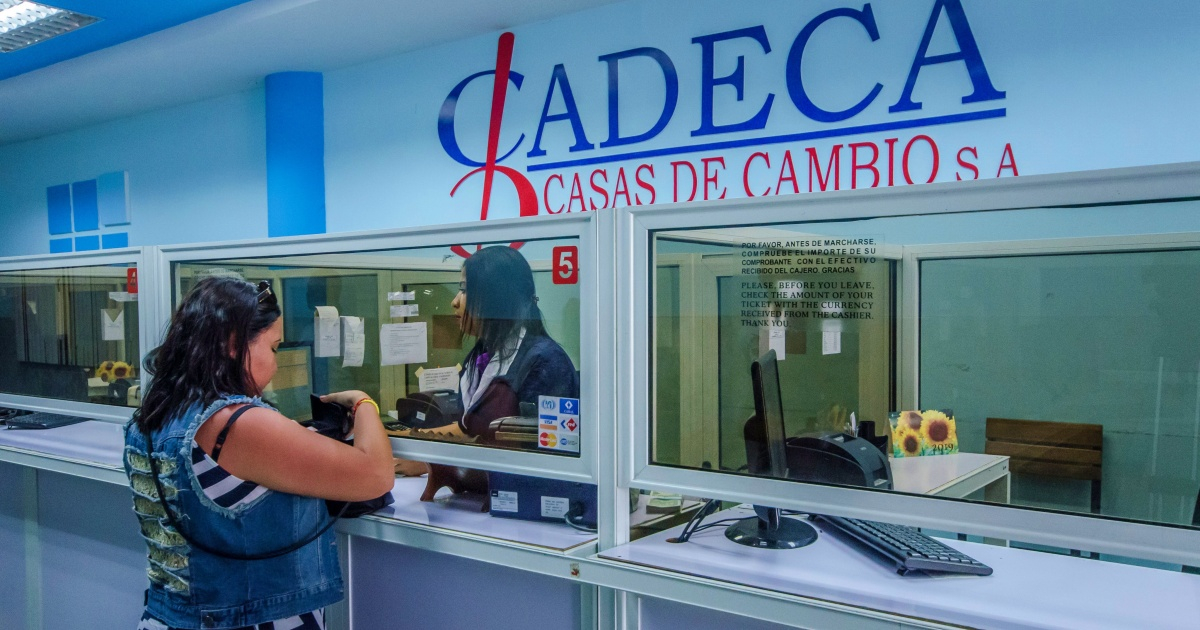Casas de Cambio S.A. (CADECA) of Cuba has labeled as "false" the recent social media rumors claiming that starting May 27, their branches would begin selling dollars at 375 pesos. "New service at CADECA: Sale of USD to the public with new exchange rates. Starting May 27, a new service will be implemented in CADECA offices: USD sale at 375 CUP," the announcement in question stated. CADECA debunked this on Facebook.
"Any information received about our entity or its services from sources other than our official channels is entirely false and baseless," warned the state entity, which did not provide further details about the unofficial channels where the rumor originated.
"There's no need to debunk anything; I knew from the start it was false. Imagine, selling USD in a country that doesn't even have money to keep its thermoelectric plants running. I know it's a meme; don't stress over it," replied activist Ernesto Almaguer Díaz with irony in the comments section.
"It's obvious it's false. Anyone who believed it is the same person who thinks they would set the dollar at 25. What a way to eat banana peel thinking it's ropa vieja!" wrote another user. "No, relax, CADECA. Everyone living in Cuba knows that's false," added three other internet users who claimed not to have believed the rumor.
"I don't know why they say it's false if it's coming," another commenter asserted.
Current Situation with Dollar Sales in Cuba
The Cuban government began selling foreign currency to the public in August 2023 amid criticism, long lines, and with a maximum purchase limit of 100 units as long as the branch had cash available.
Currently, the process for buying dollars at CADECA remains limited to just 100 units, and one must wait in a virtual queue for months on the government's Ticket platform. The official exchange rate stands at 110 CUP for buying dollars and 123.60 CUP for selling, as CADECA operates with a commission on the rate set by the Central Bank of Cuba (120×1).
In recent months, the Cuban government has stated that they are studying specific proposals to determine the exchange rate and eliminate the dual exchange rate and illegal exchange rate. In early April, Prime Minister Manuel Marrero Cruz admitted during a 2023 annual review meeting of the Central Bank of Cuba (BCC) the failure of the official exchange rate established for foreign currencies as part of the "economic and monetary restructuring."
Marrero Cruz urged finding ways to eliminate the dual exchange rate—official and informal—and the illegal exchange rate, acknowledging that these issues significantly impact inflation and price formation and are a significant concern for the population.
However, the prime minister did not specify what "concrete proposals" the government has for determining an official exchange rate that would eradicate the informal currency market in the country, nor did he mention any measures that could revitalize the economy and eliminate what the government deems "distortions." The rumors of selling dollars at CADECA for 375 CUP have emerged amid a significant drop in the informal exchange rate of foreign currencies in Cuba.
The dollar reached an informal exchange rate of 395 pesos, a price it hit on May 9. The U.S. currency remained at that price for a week, and on May 16, it began to drop, a decline that has not stopped since.
FAQs About Dollar Sales and Exchange Rates in Cuba
Here are some frequently asked questions and answers about the current situation with dollar sales and exchange rates in Cuba, which may help clarify the ongoing issues and government policies.
Is CADECA selling dollars at 375 CUP?
No, CADECA has confirmed that the information about selling dollars at 375 CUP is false and baseless.
What is the current official exchange rate for buying and selling dollars at CADECA?
The official exchange rate is 110 CUP for buying dollars and 123.60 CUP for selling, with CADECA operating on a commission over the rate set by the Central Bank of Cuba.
Why is the dollar's informal exchange rate dropping?
The informal exchange rate of the dollar has been dropping since May 16, following a peak of 395 pesos on May 9. This decline has not yet halted.
